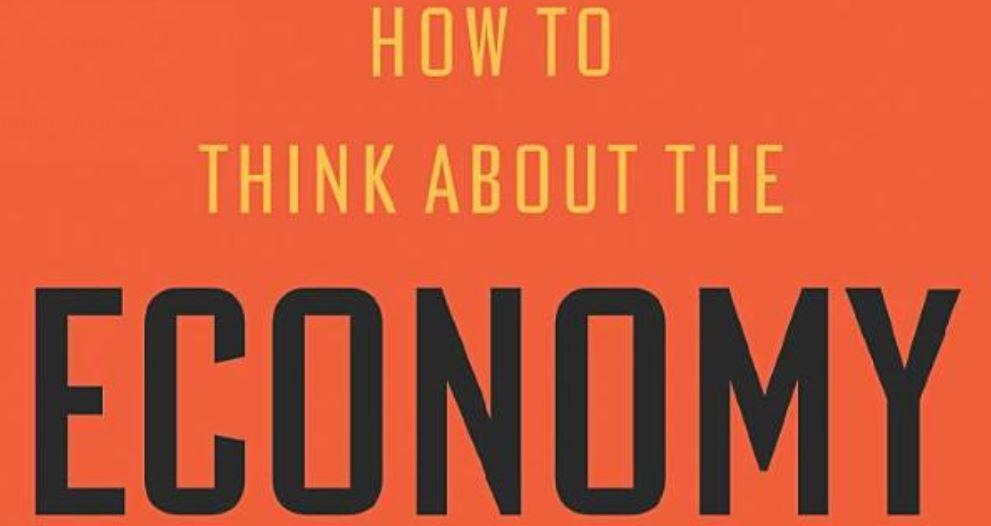
[Chapter 3 of Per Bylund’s new book How to Think about the Economy: A Primer.]
Economics is often faulted for being “ideological”—for promoting free markets. This is a misunderstanding.
The free market in economics is a model—an analytical tool. It excludes complicating circumstances and influences and allows us to study core economic phenomena on their own so that they are not mistaken for other effects. In economics, we are interested in understanding the nature and relationships of economic forces. In other words, we exclude things that hamper the economy, such as regulations, that impose upon people’s behavior and therefore economic outcomes. The result is an economy where only economic forces are at play—a “free market.”
The free-market model serves the same purpose as studying objects in free fall in physics. The free-fall model excludes such things as air resistance in order to study the effects of gravitational pull. It would not be possible to study gravitational pull without separating it from other forces that also have an effect on objects, and may add to or subtract from the effect of gravity. Economics uses the model of the unhampered or free market in the same way: to study economic forces without the influence of other things. We must know how the economy itself works before we can study influences on it.
Economics promotes and advocates free markets as much as physics promotes free-fall. Economic reasoning cannot do without the free-market model.
The Meaning of Exchange
Economics relies on economic reasoning—the use of logic to figure out the why/why-not and when/when-not. It is how we make sense of what we see and uncover the underlying economic processes. Let’s illustrate with the example of a basic exchange transaction between two individuals, Adam and Beth.
Let’s say Adam offers Beth an apple and Beth gives Adam a quart of milk in return. There are two ways we can analyze this exchange. One is to study it empirically by observing the exchange in real life and collecting “objective,” that is, measurable data before, during, and after the exchange. Using these data, we can then describe what took place and look for an explanation.
There is no need to get into specifics to see how this method is unsuitable to understand the meaning of exchange for economic reasoning. Even studying the empirical exchange in detail, we could not uncover why the apple shifted from Adam’s into Beth’s possession, why the milk moved the other way, or even if those two transfers are related to each other. There is no meaning to the observable data; they cannot tell us anything in addition to the bare observable facts of who possesses what and when. Strictly speaking, the data cannot even tell us there was an exchange.
Economics is about more than offering descriptions such as “Adam has an apple and Beth has milk” and that a minute later “Beth has the apple and Adam has the milk.” It is about understanding that this was an exchange and what exchanging means to the participating parties. We know it must mean something because they chose to do it. The exchange was not simply the outcome of certain external stimuli. Exchange is not automatic.
But to study this, we must reason from our understanding of what Adam and Beth are doing. In other words, we recognize—using what we call a priori understanding—that both of them are in fact acting and therefore that they are trying to accomplish something. Human action, as Ludwig von Mises reminds us, is purposeful behavior.
With this understanding, we can easily see that this is in fact an exchange: Adam traded his apple for Beth’s milk. Because Adam and Beth exchanged goods, we also know that—unless one of them was coerced or defrauded—they both expected to be better off with what they received in exchange. So, they exchanged because Adam values the milk higher than the apple and Beth values the apple higher than the milk.
This conclusion might appear obvious, and it should: we all have this basic understanding of human action as a purposeful undertaking to attain some end that we expect to be of greater value. We act because we want some change and because we think that change will be better in some sense.
Based on this basic understanding, we make sense of Adam and Beth’s exchange. We might not agree with their valuations, but we do not need to. We still understand that voluntary exchange must be based on the parties’ “double coincidence of wants”—that both Adam and Beth expected to become better off from the exchange (or they would not have chosen to do it).
Price and Value
In our example, Adam and Beth were unhampered in their economic exchange—a free-market transaction. It’s a highly simplified example, but simplifying is not a problem. It is an advantage because it allows us to identify the core processes and mechanisms. We would not have gained any additional understanding by complicating the exchange example with regulations, license requirements, legal definitions, health directives, taxes, etc. Including those things would in fact have made it more difficult to figure out what was actually going on. There would have been too many things involved that could have affected Adam and Beth’s decision-making.
So it makes sense to study the exchange, as just an exchange without complicating factors, so that we can learn the meaning of the exchange as such. This also means we can add more factors to see how they change the outcome and learn how those factors relate to, or impact, the exchange. We do this step by step, starting from the core and then adding additional factors. If we do not understand the exchange itself, then we cannot understand how other things affect it either.
Perhaps Beth is a dairy farmer who really likes the apples that Adam grows in his orchard and would be willing to exchange up to a whole gallon (four quarts) of milk to get a single apple. Maybe she thinks Adam’s apples are that good. “Paying” a quart is therefore a great deal for her. No wonder she is okay with the exchange!
But the same is also true the other way around. We must conclude that Adam too considers one quart a good “price” to then go through with the exchange. He values one quart of Beth’s milk higher than the one apple. If he didn’t, the exchange would not take place. So while it is true that Adam could have received more milk for the apple—four times as much—the quart he gets obviously makes the exchange worth his while. Perhaps he would have been willing to pay two apples for a quart of milk. Then paying only one apple is still a good deal from the perspective of his personal valuation.
But we do not need to know Adam and Beth’s actual valuations. In fact, they will not need to know this themselves. All that matters is that they both consider the exchange “worth it.” The “price” they pay will not be higher than their valuation of what they get in return. For instance, if Adam would not have accepted anything under five quarts of milk for an apple, then there would have been no exchange. Because that wouldn’t be worth it to Beth.
Seems obvious? Yes, but we have learned a lot by elaborating on what must be the case for an exchange to happen. We have established the necessary conditions for exchange (both parties must expect to gain from it, the “price” they each pay cannot be higher than their respective valuations of what they get in return) and distinguished between voluntary exchange, which must be for mutual gain, and involuntary transfer (such as theft). While we haven’t elaborated on the latter, it’s easy to see that neither party, or both, would go through with an exchange that is not to their benefit unless coerced. Or if they are tricked somehow or there is fraud involved.
Price Mechanism
Let’s add a third person, Charlie, who grows pears. Beth fancies this delicious novelty and gladly trades all her milk for a full basket of pears. That’s three gallons (twelve quarts) for fifteen pears. Adam then comes along and tries to repeat yesterday’s exchange with Beth, but Beth is already out of milk. The following day, Adam visits Beth earlier to get a chance to “buy” milk before Charlie gets it all. Beth likes Charlie’s pears better than apples, but Adam says he’s willing to offer Beth two apples for a quart of milk. Since her milk now buys twice as many apples as before, she considers it.
This simple example is now providing insight into how the price mechanism works. Prices are exchange ratios. They are not determined at random but by people’s ranking of different goods. We can see that there are limits to where the prices might end up. Beth’s limit is a gallon of milk per apple. She doesn’t think paying more would be worth it. But with the new opportunity to exchange for pears, Beth no longer considers apples worth buying even at the price of one quart of milk. This is obvious from her buying only pears yesterday. Her valuation of an apple might not have changed, but she values the deal she can get for pears higher. Our purchasing decisions are based on such comparisons of value. They are relative: we pursue what we value most, and the prices we pay are limited by our valuation of what we get and what we offer as payment.
We can use this example to establish what the free-market exchange ratios (prices) between apples, pears, and milk would be, given Adam, Beth, and Charlie’s current valuations. To Beth, it is worth it to exchange one quart of milk for one apple. But not if she can get five pears for a gallon of milk—that is a better deal for her. Adam is now offering two apples for each quart of milk, which Beth is considering. If she takes the deal, then it would appear Beth values pears somewhere between one and two apples. We cannot be more exact than this, even if we assume that Beth’s taste for apples and pears doesn’t change. What we can do is record the exchange ratios over time. It seems an apple exchanged at one quart of milk on day one, five pears exchanged for a gallon of milk on day two, and two apples exchanged for a quart of milk on day three. But we did not observe and do not know anything about the limits of the three people’s valuations. Or how they could have changed over time.
This is the logic of prices. Add more people and more goods, and it will be more difficult to keep track of everybody and everything. But the mechanism is the same. Prices are exchange ratios. This is true even if everybody starts using one of the goods as a common medium of exchange, for example, money. If everybody starts referring to prices of goods in terms of how much milk it takes to buy them, then it will be much easier to compare prices. But prices are still exchange ratios and exchanges are still for mutual gain.
The Step-by-Step Method
Practically all of the important information that we get from the example of Adam, Beth, and Charlie was based not on observation but on our prior understanding of human action. Because we understand that we act to attain something that we value and that we engage in exchange with others for mutual gain, we can uncover the meaning of Adam’s, Beth’s, and Charlie’s exchanges and the exchange ratios that they determine. Simply observing who has what when, and perhaps the “mechanics” of the exchange, is not enough to understand what is going on. Similarly, in the economy overall: we cannot make two observations and pretend to have learned the processes that caused a difference between them. We have to step through the logic of action to uncover what actually was going on.
Let’s jump ahead and consider an example of a money economy (we’ll discuss money in chapter 6). Money has a certain purchasing power: we need specific amounts to buy different types of goods. Many economists, both past and present, would correctly claim that the supply of money (how much money is available) affects the prices of goods. As new money is created there is more money to buy the same number of goods, so money prices tend to go up. If the number of goods available to buy is the same but the money supply instead falls, then money is harder to come by—so money prices tend to fall.
But this does not mean we can also conclude that there is a proportional relationship between money supply and goods prices. Doubling the supply of money will not double all prices. In fact, even if we magically doubled all money overnight so that when people wake up the next day they find the amount of money in every bank account, wallet, and mattress has doubled, we still could not say the prices of all goods would double. Why not? Because people do not react in the same way or at the same time to the doubling of their cash. The new prices, just like the old, will be determined by people’s actions.
To use proper economic reasoning we must walk through the logic step by step to fully take into account the changes that happen over time and in sequence. We know that prices are exchange ratios, determined by supply (how much is offered for sale) and demand (how much people are willing to buy). But doubling a person’s cash on hand does not mean they will double their purchases of the same goods. Instead, they will always act to purchase the goods that best satisfy their wants relative to the other goods available.
To put it differently, if people had purchased two pounds of butter before their cash doubled, there is no reason for us to expect them to purchase four pounds of butter. It is more likely that there are other goods that would satisfy their wants more than a third and a fourth pound of butter and they would then act to purchase those instead. After all, there is a reason they didn’t buy the third pound of butter before. In any situation, as we have learned, individuals will pursue whatever ends they consider of greatest value to them.
Just like Beth in the example above chose pears over apples and then apples over pears when Adam offered her a better deal. People waking up with more cash are going to pursue whatever purchases they think will make them best off. Some may choose to simply buy more of the same; others may choose to buy other things in addition to what they usually buy; yet others will buy different things entirely. This means demand for the specific goods offered for sale will change in different ways: some goods will see increased demand, some will see a decrease, and others might see no or little change. This changes their market prices. Increased demand will make the prices of some goods rise and vice versa.
Individuals do not always act at the same time: some will act sooner and before prices have adjusted, which means their purchasing power, given the prices of goods, has in fact doubled. Their actual purchases (their demand) will influence the prices of the goods they buy, which means those acting later may be faced with higher prices for those goods the earlier actors chose to buy. Prices are determined by people’s actions, not by a mathematical formula.
Imagine if the people above acted early but did not buy another two pounds of butter with their extra money. Instead, they spend it on candy. This means this candy is already sold when those acting later want to buy it. Whatever candy is left for sale is scarcer and the prudent store owner might raise the price to take advantage of this sudden increase in demand. As a result, the later actors will face different price situations than the earlier actors, with some prices being higher and other prices not—some perhaps being lower than they otherwise would have been. Their actions will depend on the specific exchanges they face, but there is no reason to assume that people’s actions overall will mysteriously balance out such that all prices end up exactly double what they were the day before. What we can conclude is that prices overall will tend to go up because there is more money but not more goods. But prices of all goods will not rise proportionally with the supply of money.
This step-by-step analysis reveals that the common conclusion that doubling the amount of money will double all prices is premature and unfounded. Prices adjust unevenly and at different times. Consequently, it would be an error to say that money is “neutral” in the economy. Even magical money is not neutral.
Economics as a Social Science
The step-by-step analysis of economic reasoning highlights a major difference between social sciences like economics and the natural sciences like chemistry or geology. We simply cannot rely on observation and measurement to gain understanding of social phenomena, and we also cannot rely on static analysis or aggregates. It is necessary to view the economy as a process—an evolving complex adaptive system—and walk through the logic step by step to uncover the processes and the real effects as they play out over time.
This means theory in the social sciences has a specific role and meaning that differs from its use in the natural sciences. Theory is prior to observation and allows us to make sense of what we are seeing, not the other way around. Theory provides us with a framework to understand what we are seeing by uncovering the underlying processes, but it cannot be used to predict precise outcomes. To make predictions as in the natural sciences, we would need to know people’s actual subjective valuations, see what they see and how they understand their situation. But none of this is available to us as observers.
Consequently, social science, and therefore economics, is necessarily theoretical in a different sense than the natural sciences. Theory comprises what can be logically derived from human action—it is our explanation of all social phenomena based on our understanding of what it means to act. After all, all social phenomena have this in common: they are the result of people’s actions.
This means that theory in the social sciences is more limited in scope than theory in the natural sciences, but it also meets a much higher bar: social science theory is true, not merely hypotheses yet to be falsified.








